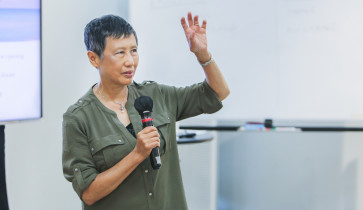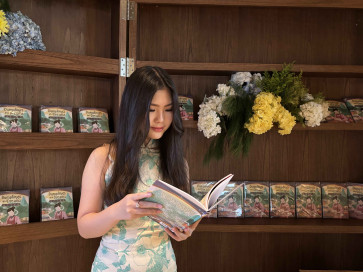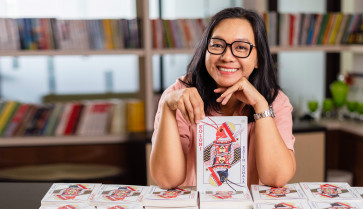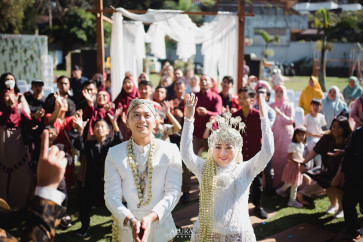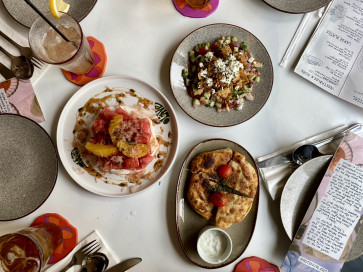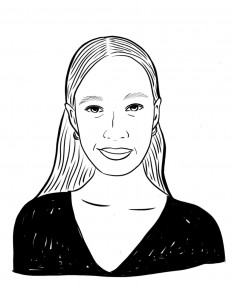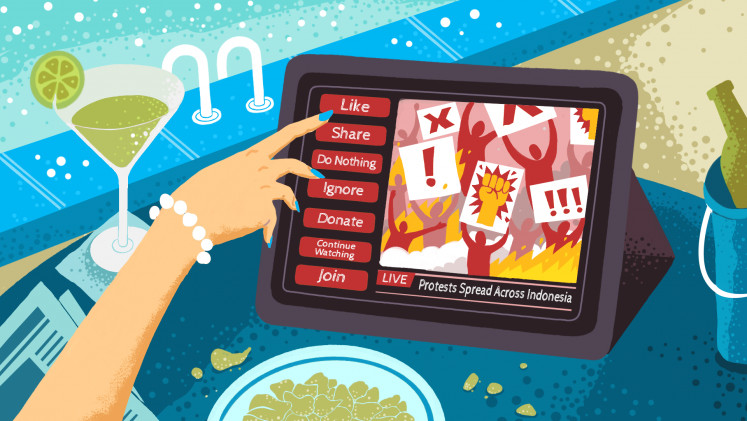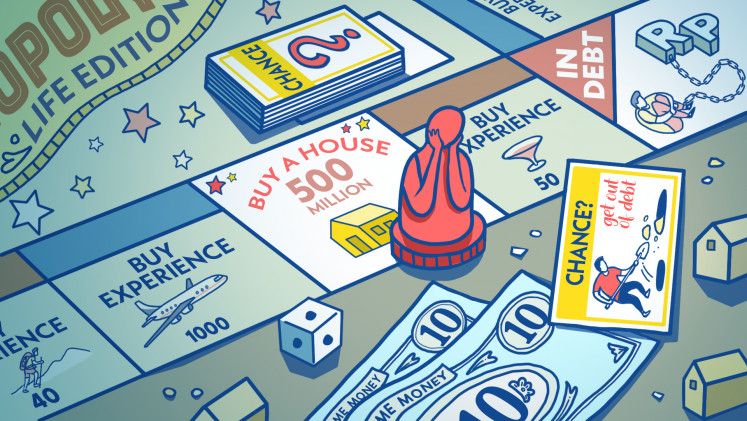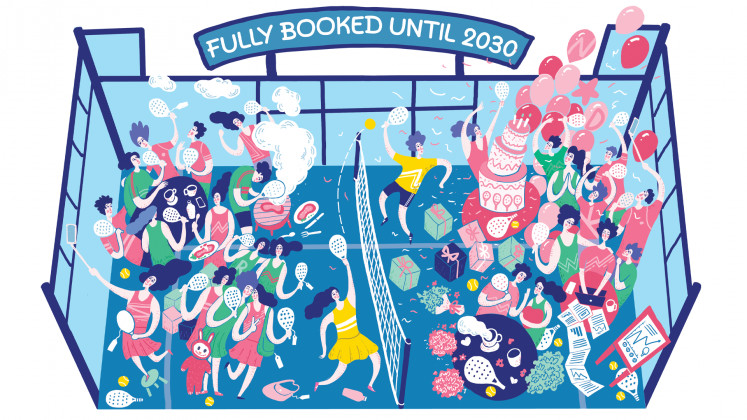In Jakarta, people don’t just live. They test out versions of themselves until one sticks, or until the city strips them bare.
It’s a place where identity isn’t fixed. You’re free to be weird, quiet or loud. In an underground gig, a late-night warung or a Sunday art market, you might just find your people.
Maybe even yourself.
That’s the quiet promise of the Jakarta Dream, a stubborn belief, carried from islands and small towns, that if you can just survive here, something will shift.
“That’s Jakarta, personal, serendipitous and full of open doors.” - Bhim
No surprise thousands still flock to this jaded megacity of 11 million, with a greater metropolitan area of 32 million. They come from outer islands, satellite cities and the comfort of home, chasing a hunch that these cracked, neon-lit streets might see something in them they haven’t yet recognized.

Thank you!
For signing up to our newsletter.
Please check your email for your newsletter subscription.
The pull is more than emotional.
In just the first half of 2023, Jakarta attracted Rp 79.5 trillion (US$5.2 billion) in domestic and foreign investment. Transportation, communication and services led the way, but behind those numbers are real people betting on the city’s promise.
Here are three who’ve made that shift. They arrived as outsiders and found their footing, their voice and their tribe. Back home, the rules were written. In Jakarta, they discovered how to rewrite them.
A city full of open doors
Raised across Europe, Switzerland, France, Austria and Czechoslovakia, 69-year-old Bhim grew up multilingual. When his family returned to Jakarta, he was technically “home”, but the cultural adjustment was jarring.
“In Europe, asking questions signals curiosity and humility. In Indonesia, it often reads as arrogance,” Bhim exclaimed.
Even though he was born in Indonesia and is fluent in Indonesian, his peers sometimes called him a foreigner.
“You’re not really Indonesian,” they’d say, sometimes as a joke, sometimes not.
Despite his reluctance, Bhim discovered what Jakarta offered that no other city could: access. Real, expansive access to people, work and momentum. Living in a kos (boarding house), chatting in narrow alleys and office cubicles, switching between five languages at a time when globalization was just beginning, it gave him an edge.
Back then, job offers didn’t arrive through LinkedIn or email. They came through conversations, chance encounters and even party invitations.
His career spanned architecture, cross-cultural training for a Canadian-funded project in Lombok, airport construction with a French company and nearly 40 years in journalism.
But none of it happened by accident. Moving from outsider to insider took work. Part of what made it possible was Bhim’s quiet proficiency in reading people.
Being gay in a largely heteronormative society sharpened his instincts. Long before coming out in the early 2000s, he’d developed a kind of radar, assessing who felt safe, who didn’t and who was best kept at arm’s length.
“Being gay taught me selectivity,” he says.
“I had to work harder and smarter to protect my peace. That’s how you become an insider on your own terms.”
Then came an unexpected chapter: parenthood.
“I never imagined I’d raise a family,” he says.
But one day, a close friend who regularly donated to Jakarta’s orphanages called with a question: Would he consider adopting?
Bhim said yes. Together with his partner of 17 years (now separated), he raised a son, now 24 and thriving in the IT world.
“It changed everything,” he says. “It’s proof people like me can make it.”
These days, Bhim is immersed in wastra, the art of traditional weaving.
“I’ve always adored art. I collected antiques from my travels and loved curating my spaces,” he says.
“Even my coworkers used to call my office desk a Buddha Bar.”
His work now takes him from island to island, learning and teaching, observing and empowering.
So when strangers challenge his identity, saying "you’re not a real Indonesian”, Bhim doesn’t flinch.
“I know Indonesia better than you. I know Jakarta better than you,” he fires back. “Have you even been around?”
A city that molds you
What makes someone move to Jakarta, alone, right after high school?
For Putra, then 19, the answer was clear: It had to be Jakarta.
“I think they were surprised, but I said it straight: I need a challenge,” he recalls.
He knew the kind of competition he wanted, sharp, impersonal and indifferent to where you came from, that wasn’t going to be found in a place where everyone already knew his name. Jakarta felt distant and demanding. It was perfect.
His plan started with a bimbel (intensive prep school) for university entrance exams. There were no international relations programs in West Sumatra at the time, and he had his eyes set on becoming a diplomat.
“Bimbels in West Sumatra mostly prepares you to pass the local rankings. But my aim was to beat the national competition. If I wanted to raise my bar, the only way was to move to Jakarta.”
In the end, Putra got into University of Indonesia (UI) School of Law instead. It wasn’t the plan, but it turned out to be the right fit.
Soon, he realized education in Jakarta doesn’t stop at the classroom door. It spills onto the streets, into the sweat-drenched angkot rides, and the unspoken art of napping standing up without face-planting into a stranger’s shoulder on the train commute.
“Jakarta tested my tolerance, slowly, then all at once,” he chuckles.
While peers returned home during semester breaks, he stayed behind.
“Those quiet, often lonely months became fertile ground where I took internships, odd jobs and opened myself to new networks.”
From interning at the Foreign Ministry to landing a full-time job at @America, then ascending to the US Embassy, each step was a conscious push beyond his comfort zone.
Yet as he carved out a place in the city, a deeper calling emerged.
Jakarta’s electric diversity pulled him toward communities living at the margins, the Deaf community, trans individuals and indigenous groups like the Dayak Iban, with whom he lived during university fieldwork in Kalimantan.
Those encounters became revelations, eventually leading him to pursue a master’s degree in at the University of Sydney.
Now, Putra is living in a boarding house with Australian roommates, commiserating over shared meals, chasing part-time work between semesters.
Putra doesn't go so far as to call Jakarta a mandatory ordeal, but for students bridging local roots and global dreams?
“The city is a crash course no university teaches,” he says.
You see it in IELTS tutors on street corners, in offices buzzing in English and in networks stretching across borders. All the unspoken prerequisites for leaping further.
But when asked for advice, he doesn’t prescribe Jakarta. He asks instead: "Where will you outgrow yourself?"
A city that writes your love story
During her first year in Jakarta, 17-year-old Jul (not her real name) fell in love. It wasn’t part of the plan.
She had left Merauke at 17 with the kind of clarity only teenagers have: study medicine, graduate, return home, open a clinic.
But that plan unraveled. Instead, she found herself studying psychology, and her new path took root in Jakarta.
“Merauke’s fieldwork demanded practical skills over theory. Going back no longer made sense,” she explains.
The city came with its own appeal: freedom, no curfews, the thrill of anonymity.
Then, came the guy from her university-prep class. Charming, bookish and genuinely curious about her.
“Everything felt too good to be true. Until it wasn’t,” she admits.
The relationship moved fast, then fell apart slowly.
“He was struggling, but he didn’t have the words to tell me. And I didn’t know how to ask,” she says.
For the next seven years, she carved out a life on her own. But unlike smaller towns where your history precedes you, Jakarta lets you feel deeply without turning your pain into spectacle.
When things hurt, she’d ride loops on the TransJakarta bus network for hours, letting the motion quiet her thoughts. She jogged alone in Gelora Bung Karno, watching strangers carry their invisible wounds and hopes around the same track. She went to festivals in Taman Ismail Marzuki, wandered through bookstores in Cikini and lingered in Kemang cafés where no one asked what was wrong.
“Most people leave cities after heartbreak,” she reflects.
“But Jakarta absorbs your past and still gives you new streets to walk on.”
Over time, though, she realized that solitude had its limits.
“I started wondering, what if the distance is me? What if I’m the one keeping people away?”
Therapy began with her BPJS (social security) from Merauke, portable across provinces, linking her to Jakarta’s web of clinics. If a therapist’s approach didn’t fit, she could try another.
And so began the slow, deliberate work of healing. One night, she acted on something she and her therapist had discussed: She reached out. One of those messages went to her ex.
“He had grown too. He’d done his own inner work,” she recalls.
Their reconnection was gentle and thoughtful. They spoke like old friends. Then, like two people ready to build something with care.
They dated quietly for nearly two years. When they married, they chose to invest more in premarital counseling than in the wedding celebration.
“Jakarta taught me that healing isn’t a one-time thing. It’s something I have to weave into my everyday life, especially in how I love,” Jul says.
“I think this city knew to keep us apart until we were both ready. And when we finally were, somehow, it gave us the space to begin.”
Is the Jakarta Dream still attainable?
Jakarta transformations don’t happen overnight. Bhim, Putra and Jul arrived in the city over a decade ago, when its rhythm was already relentless, but its liminal spaces felt easier to navigate.
Today, the tide has turned.
Data from Jakarta’s Civil Registry shows migrant numbers plummeting—from 259,318 in 2023 to just 16,207 in 2024. This year, it could dip below 10,000.
Meanwhile, BPS figures reveal a historic shift. In 2020, Jakarta hemorrhaged 585,011 residents—the highest net loss on record. More people fled than arrived.
Yet Jakarta, the Big Durian, never pretended to be easy. The sharp spikes of the city skyline draw blood. Its chaos overwhelms. But those who persist, who learn to grip its rough shell just right, still find something singular inside: a bittersweet juice, a flavor that lingers.
This city doesn’t hand out dreams. It dares you to earn them.
So we’re left with the question: Is the Jakarta Dream still worth it?
Allestisan Citra Derosa is a writer who often turns personal challenges into stories. She finds comfort working at local pet shops and has a knack for making any space feel like home.




